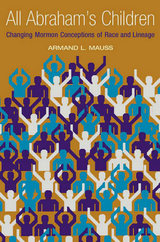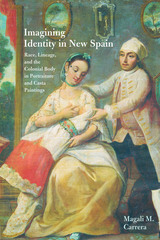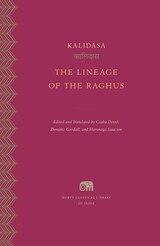
Mauss describes a complex process of the broadening of these self-defined lineages during the last part of the twentieth century as the modern Mormon church continued its world-wide expansion through massive missionary work.
Mauss contends that Mormon constructions of racial identity have not necessarily affected actual behavior negatively and that in some cases Mormons have shown greater tolerance than other groups in the American mainstream.
Employing a broad intellectual historical analysis to identify shifts in LDS behavior over time, All Abraham’s Children is an important commentary on current models of Mormon historiography.

Using an interdisciplinary approach that also considers legal, literary, and religious documents of the period, Magali Carrera focuses on eighteenth-century portraiture and casta paintings to understand how the people and spaces of New Spain were conceptualized and visualized.
Winner, Book Award, Association of Latin American Art, 2004
Reacting to the rising numbers of mixed-blood (Spanish-Indian-Black African) people in its New Spain colony, the eighteenth-century Bourbon government of Spain attempted to categorize and control its colonial subjects through increasing social regulation of their bodies and the spaces they inhabited. The discourse of calidad (status) and raza (lineage) on which the regulations were based also found expression in the visual culture of New Spain, particularly in the unique genre of casta paintings, which purported to portray discrete categories of mixed-blood plebeians.
Using an interdisciplinary approach that also considers legal, literary, and religious documents of the period, Magali Carrera focuses on eighteenth-century portraiture and casta paintings to understand how the people and spaces of New Spain were conceptualized and visualized. She explains how these visual practices emphasized a seeming realism that constructed colonial bodies—elite and non-elite—as knowable and visible. At the same time, however, she argues that the chaotic specificity of the lives and lived conditions in eighteenth-century New Spain belied the illusion of social orderliness and totality narrated in its visual art. Ultimately, she concludes, the inherent ambiguity of the colonial body and its spaces brought chaos to all dreams of order.

A new English translation of Raghuvaṃśa by the celebrated Sanskrit poet Kalidasa, who inspired such modern writers as Goethe and Tagore.
For a millennium and a half, Kalidasa’s works—from The Cloud Messenger to The Recognition of Shakuntala—have delighted audiences in India and beyond. Although the renowned poet and dramatist inspired many literary works over the centuries, little is known about his life. He likely lived in central India in the late fourth or early fifth century.
Kalidasa’s The Lineage of the Raghus, or Raghuvaṃśa, belongs to the Sanskrit literary tradition of mahākāvya, or court poem. It recounts the lives of ancient kings in the sūryavaṃśa, the Solar Dynasty who ruled from the capital city of Ayodhya. The poem describes, among other episodes, the quest for offspring by Dilipa, a descendant of the primordial king Manu; the world conquest of his son Raghu, which offers a panorama of the Indian subcontinent; the exploits of the famous Rama, an incarnation of Vishnu; and the debaucheries of Agnivarna, which jeopardize the future of the lineage.
This volume presents a new edition of the Sanskrit text in the Devanagari script alongside a fresh English translation of this enduring epic.
READERS
Browse our collection.
PUBLISHERS
See BiblioVault's publisher services.
STUDENT SERVICES
Files for college accessibility offices.
UChicago Accessibility Resources
home | accessibility | search | about | contact us
BiblioVault ® 2001 - 2024
The University of Chicago Press









